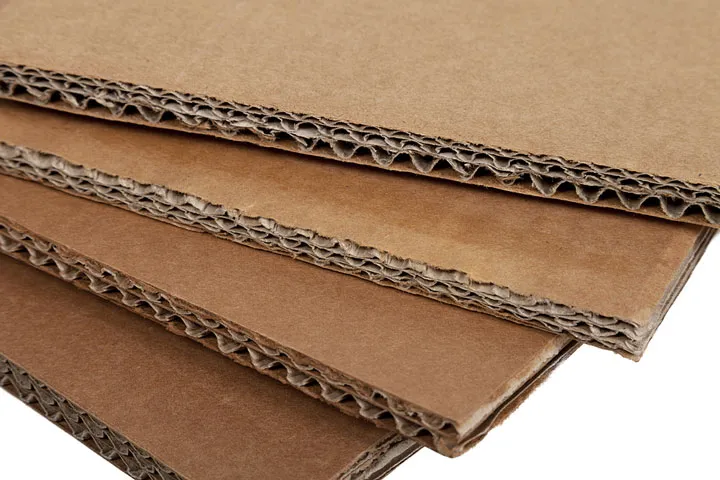Mulching has many benefits in both the ornamental and vegetable gardens. Why not recycle old cardboard boxes into improvised mulch? Easy to install, they are also very effective in covering the soil.
Contents
Which cardboard?
Choose raw cardboard, with as little printing as possible so that the chemicals in the inks do not dissolve in the soil. Remove any adhesive tape, staples or plastic elements before installing your cardboard in the garden.
How do I create a mulch with cardboard?
Manually weed the soil and level the area with a rake before spreading your mulch.
Start by moistening your cardboard to soften it so that it adheres perfectly to the soil. To cover large areas, simply spread your cardboard overlapping slightly.
Then cover this somewhat unsightly mulch with dead leaves, grass clippings or straw.
If you need to mulch the base of vegetables in the garden, cut your cardboard into strips so that you can wrap it around each plant.
If you use a drip system, place the cardboard on top.
The cardboard will take about 3 months to disintegrate and be transformed by the pedofauna; you can then renew it or cover the soil with another type of mulch.
Cardboard can be used in a very efficient way to cover the soil during the winter period in order to avoid the leaching of nutrients due to heavy rains.
The soil remains loose under this type of mulch which decomposes in only a few months and is very appreciated by earthworms.
It is also very useful to prevent the growth of weeds and therefore reduces the amount of weeding work. It will be enough to remove it to start cultivating the soil. This technique is ideal for weeding large areas without getting too tired. You can then add the remaining cardboard to the compost pile, where it will decompose perfectly.
At the feet of vegetables, it allows a saving of watering but also ensures an effective barrier against the parasites which lay their eggs in the ground.
In the orchard, it eliminates the need for weeding, which is always delicate at the foot of fruit trees whose roots are sometimes too far above the ground to hoe without risk.
In the ornamental garden, it keeps the soil moist and reduces watering, while preventing the growth of wild grasses.
Should You Use Cardboard For Mulching
Cardboard is a material that can be recycled and is also used as a material in making toys. This is an inexpensive material to use, but it can cause some problems when used as a landscaping option. Landscapers can use cardboard as a way to control weeds and conserve resources. However, when using cardboard as a mulch, it can harm the environment if not handled correctly.
Cardboard is used for mulch in gardens because it’s easy to work with and produces quick results. The material is light weight, cheap and easily disposed of. This makes cardboard ideal for landscaping projects since it takes little effort to complete these tasks. However, this also makes it a problem when used as a mulch since it doesn’t take long for weeds to grow in this form of composting. Landscapers use cardboard as a mulch to conserve space and keep the environment clean.
The definition of “mulch” is any substance that covers soil or plants and prevents them from being seen by the naked eye. Various materials can be used for mulching, including leaves, shredded paper and even plastic bottles. Cardboard is one of the most popular materials for mulching because of its ease of disposal and fast results. Composting with cardboard produces nitrogen-rich humus; this reduces stress on landfills by producing fewer greenhouse gases. The only potential downside to using cardboard as a mulch is that it causes damage to the environment over time.
Landscapers tend to use shredded paper or leaves for mulching instead of packing whole plants into the ground this way. While plant materials are biodegradable, they can take longer than 90 days to decompose completely in shredded form. This makes this type of compost ideal for controlling weeds without sacrificing the environment or their health. Other than that, there aren’t many differences between shredded paper or leaves when using them as a mulch— they both produce quick results with minimal effort required by the landscaper
Using cardboard for landscaping projects creates quick results such as erosion control or weed suppression, but this method has drawbacks if not handled correctly. The material can harm the environment due to compaction caused by compaction from weeds growing in the cardboard over time . It’s best to find other ways to control weeds instead of creating more work for yourself with your composting materials
Using cardboard for landscaping projects creates quick results such as erosion control or weed suppression, but this method has drawbacks if not handled correctly . The material can harm the environment due to compaction caused by compaction from weeds growing in the cardboard over time . It’s best to find other ways to control weeds instead of creating more work for yourself with your composting materials


